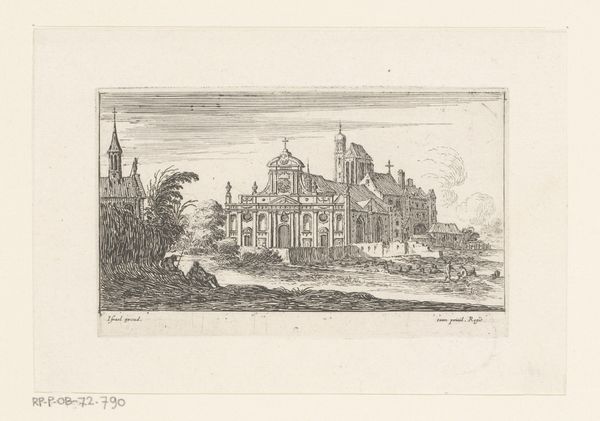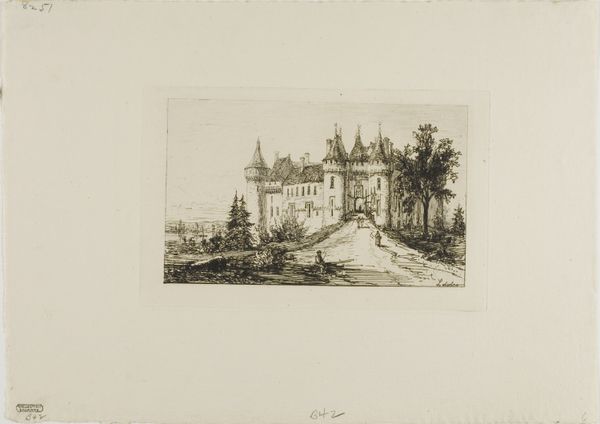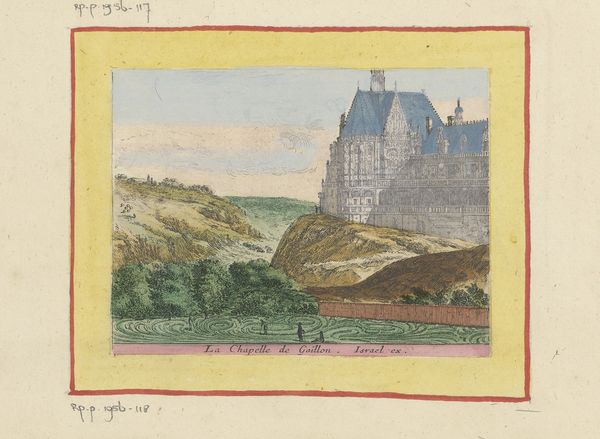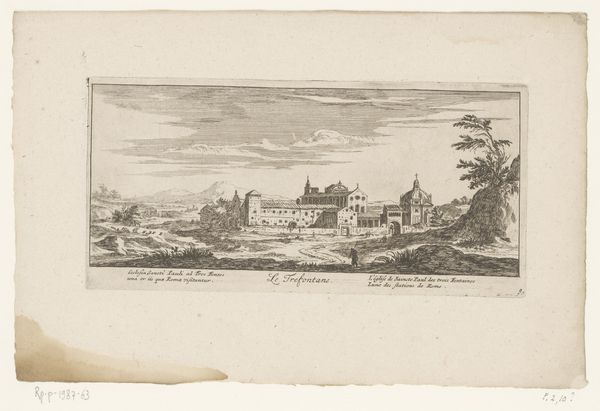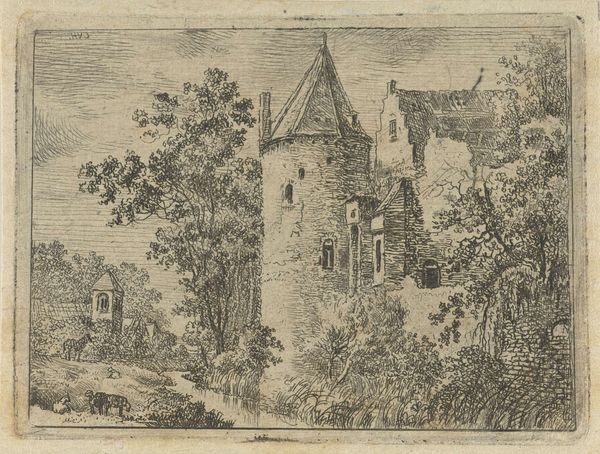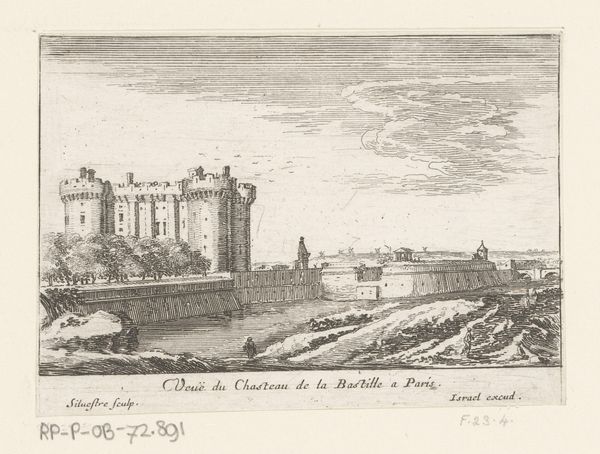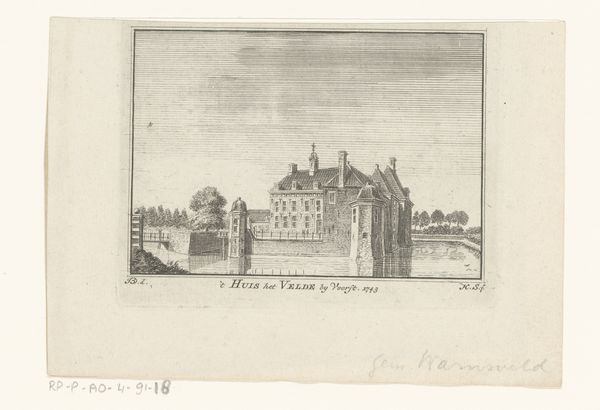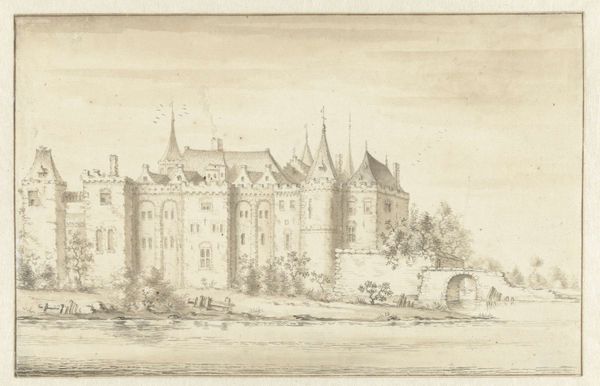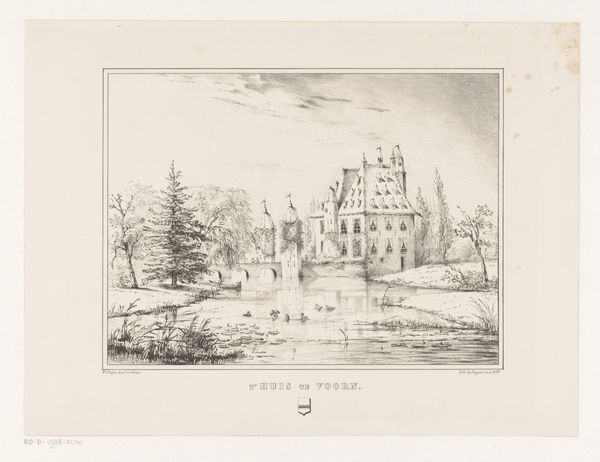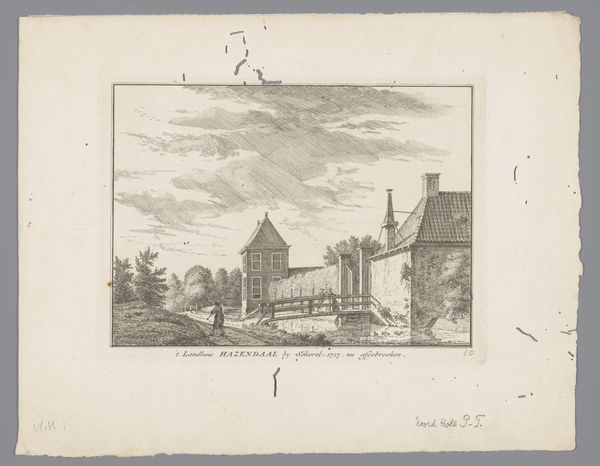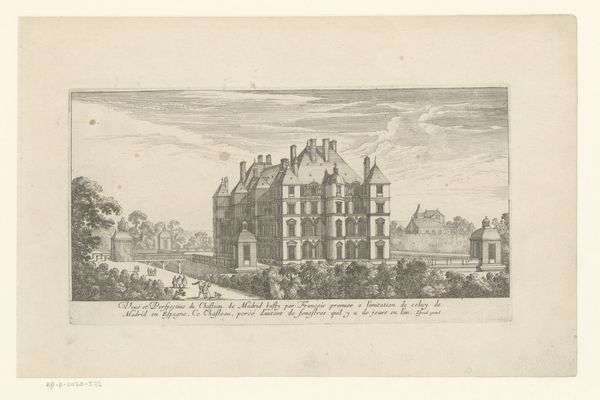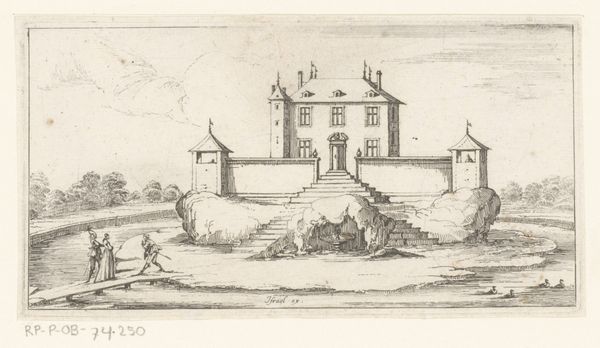
drawing, print, ink, engraving
#
pen and ink
#
drawing
#
baroque
#
pen drawing
#
mechanical pen drawing
# print
#
pen illustration
#
pen sketch
#
old engraving style
#
landscape
#
linework heavy
#
ink
#
sketchwork
#
pen-ink sketch
#
pen work
#
cityscape
#
engraving
Dimensions: height 90 mm, width 116 mm
Copyright: Rijks Museum: Open Domain
Curator: Here we have "Gezicht op de kapel van Gaillon" by Israel Silvestre, an engraving dating back to sometime between 1631 and 1661. Editor: My initial impression is of a somewhat stark, yet serene landscape dominated by the imposing structure of the chapel. It’s meticulously detailed, almost architectural in its precision. Curator: Indeed. Silvestre was celebrated for his technique. You can see the linear precision that the engraver wielded; it speaks to a certain industrial capacity in replicating images across the European continent. Think of this process when analyzing the Baroque’s impact. Editor: The chapel, perched high upon that bluff, takes on a symbolic power. Chapels in general symbolize aspiration, communion... Gaillon may speak to the status of religion and authority within the context of the aristocracy. It’s a bit isolated. Curator: Yet, this isolation can tell us so much. Consider how this reflects aristocratic patrons asserting cultural capital outside the more crowded sphere of the court in Paris. The labor invested, of course, shows that high artistic vision relies upon networks of distribution, workshops to replicate the design at scale for mass consumption. Editor: You are probably right; those very clear social dynamics influence perception. The light seems to almost emanate from the chapel itself, drawing our eyes upward toward the heavens, as though it represents not just societal authority but a divine presence as well. Curator: Absolutely. Silvestre presents a product intended for both aesthetic enjoyment and function. As a widely circulated print, it serves to reinforce these notions, bringing a potent, material force in image making directly to the consumer, shall we say? It shows that these views help in forming the very nature of social hierarchies across vast distances. Editor: It truly feels that through its visual vocabulary, the engraving transmits potent symbols of both religious conviction and aristocratic status. This view encapsulates a desire to establish authority within the social landscape, even today. Curator: I agree that we should interpret symbols. The cultural and artistic power of prints shows how labor affects our experience; it gives insight into our understanding of baroque ideology during that time. Editor: What a fascinating dialogue between social forces and cultural expression, a divine and mortal authority interwoven here. Curator: Indeed, all connected via lines etched onto metal, pressed onto paper, seen by potentially thousands.
Comments
No comments
Be the first to comment and join the conversation on the ultimate creative platform.
